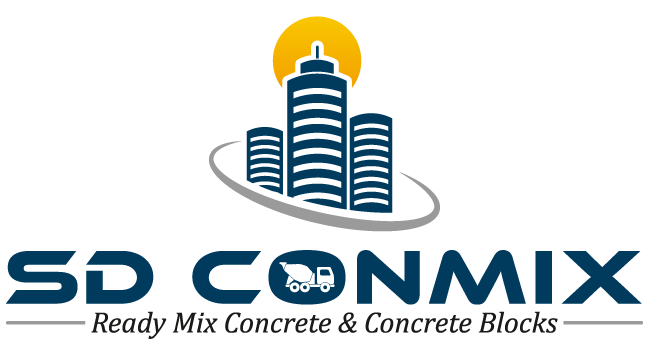A well-designed concrete mix is the foundation for a dependable infrastructure and for all other types of concrete structures.
During its lifetime, concrete is exposed to a variety of environmental conditions. A good concrete mix will be able to withstand these conditions.
The durability of a structure depends on its design mix, which is determined by several factors. Let’s look at some of them.
Factors Affecting Concrete Mix Design Strength
The mixture of concrete constituents (Cement, Water, Aggregates and Admixture) in defined proportions will create concrete of appropriate strength. SD Conmix is the best ready-mix concrete manufacturer that provides you with concrete made according to standards.
The mix design strength for a particular type of cement depends on:
Water/Cement ratio
Cement content
Relative proportions of fine and coarse aggregate
Admixture
The design strength variable factors mentioned here are derived from different theories and specifications.
- Water/cement ratio
The water-to-cement ratio is the most important factor in concrete strength and durability. Concrete strength depends on the water-to-cement ratio rather than its cement content. The higher the water/cement ratio, the weaker the concrete will be. As a general rule of thumb, every increase of 1% in the amount of water added to the concrete reduces its strength by 5%. When water is added to the concrete for workability above a water/cement ratio (0.38), it evaporates and leaves cavities. Cavities are thin capillary openings in concrete. The cavities reduce the concrete’s strength and durability. This is why controlling the water/cement ratio is so important.
- 2. Cement content
Cement is the main component of concrete. It acts as the binding agent and gives the concrete its strength. For durability reasons, the cement content should never be less than 300kg/m3 for the RCC. Higher cement content is necessary for severe conditions where weathering agents are exposed to the concrete. It is not necessary for higher cement content to give better strength. The latest findings show that a leaner mix gives better strength for the same water/cement ratio.
If you want to achieve a lower water/cement ratio without affecting workability, you will need to increase the cement content. A higher cement content helps us to achieve the desired workability with a lower water /cement ratio.
- Relative composition of Fine & Coarse Aggregates
Aggregates can be divided into two categories:
Coarse aggregate (metal) and
Fine aggregate (sand).
The coarse aggregate is the particles that are retained on an IS 4. 75mm sieve, while the fine aggregate (sand) is the particles that pass through it.
If you change the type of coarse aggregate, it will change the strength of your concrete. The ratio of fine aggregate to coarse aggregate depends on the fineness of the sand, the size and shape of the coarse aggregate, and the cement content.
The grade of the aggregate in your concrete mix design will determine how much paste you need for your concrete. If you have a lot of voids, you will need more cement to fill them. Using well-graded aggregate will help reduce the void content, so you will need less paste.
- Admixtures
There are many types of admixtures in the market that are used for different purposes. They are used in concrete mix designs when they need to address certain specific issues, such as: Reducing construction costs, acquiring certain properties efficiently, and maintaining the quality of the concrete throughout the mixing, transportation, placement and compacting process.
The strength gain of concrete is achieved by the use of admixtures that reduce the amount of water in the mix.
Conclusion
The combination design of concrete provides the building blocks that create the structural strength and durability required for concrete structures. The process of creating an ideal concrete mix is complex because each element has its own unique set of properties. All elements need to be tested to determine their physical properties and ponder over if they are appropriate for concrete applications.
FAQs
The service life of a structure will only be achieved by a good design mix of concrete ingredients that are used for ready-mix concrete.
- My construction project is in a place of extreme weather conditions. Will added cement give enough strength to my building?
Cement should not be lesser than 300kg/m3 for RCC. For the same water/cement ratio, it is the leaner mix that will give better strength. SD Conmix, is known for its superior quality ready-mix concrete products.
- My construction project is crossing the budget. Can I overcome this? If so how?
Usage of specific quantities of Admixtures to ready-mix concrete, while it is manufactured, can to some extent reduce the concrete cost in construction that too without compromising the strength.
- I could see a few voids in the concrete. Will it affect durability? How could I resolve this?
Voids are a serious concern. Depending on the area, they can reduce concrete life. SD Conmix which manufactures & supplies quality ready-mix concrete uses well-graded aggregates that will help to reduce this void content. If there are several voids present, more cement will be required to fill them. Filling such voids is the only remedy since concrete is hardened.

